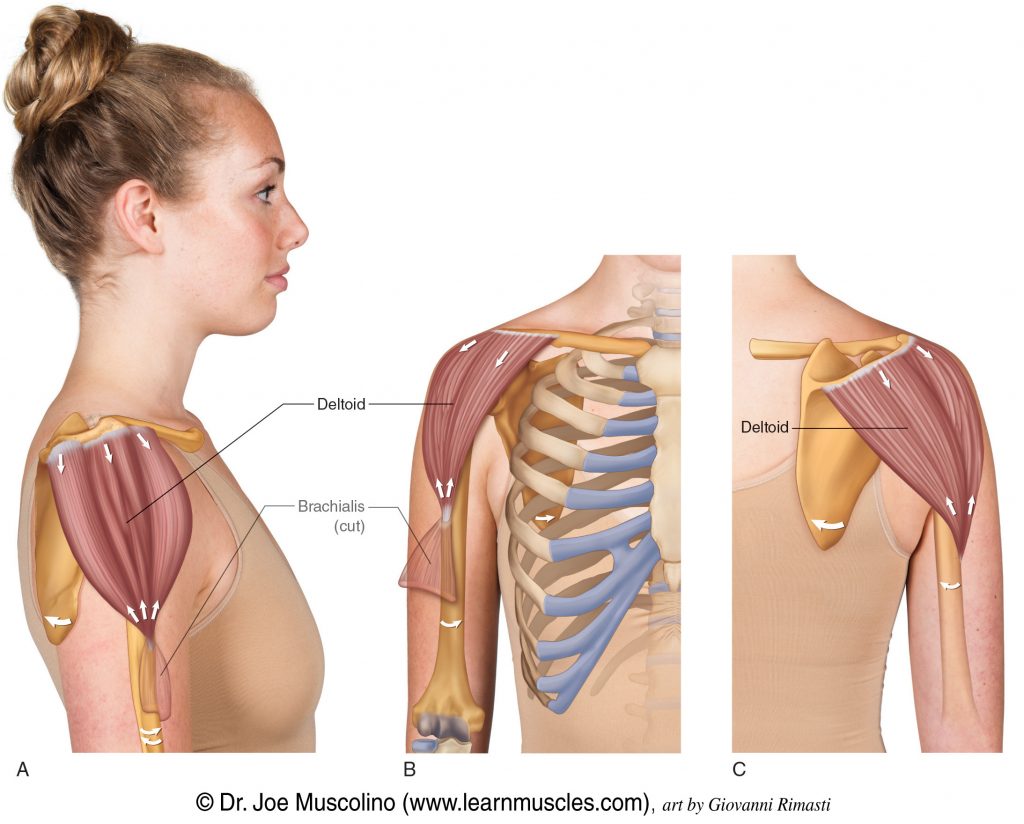- Click here for access to the full Anatomy Glossary.
- Right click on the image for a downloadable file of this muscle.
- Use of this artwork requires proper credit to be given (Permission: Dr. Joe Muscolino. www.learnmuscles.com – art work Giovanni Rimasti)

The Deltoid is usually stated as having anterior, middle, and posterior parts.
ATTACHMENTS:
- The deltoid attaches from the lateral clavicle, acromion process and spine of the scapula to the deltoid tuberosity (approximately 40% of the way down the humerus).
ACTIONS:
- Abducts the arm at the glenohumeral joint (entire muscle)
- Flexes the arm at the glenohumeral joint (anterior fibers)
- Extends the arm at the glenohumeral joint (posterior fibers)
- Medially rotates the arm at the glenohumeral joint (anterior fibers)
- Laterally rotates the arm at the glenohumeral joint (posterior fibers)
- Horizontally flexes the arm at the glenohumeral joint (anterior fibers)
- Horizontally extends the arm at the glenohumeral joint (posterior fibers)
- Adducts the arm at the glenohumeral joint (the very lowest fibers anterior and posteriorly)
- Downwardly rotates the scapula at the scapulocostal joint (reverse closed-chain action)
NOTES:
- The name deltoid comes from delta, which is Greek for triangle and oid meaning resembling. In other words, the deltoid muscle is triangular in appearance.
- The proximal attachments of the deltoid are the same as the distal attachments of the trapezius.
